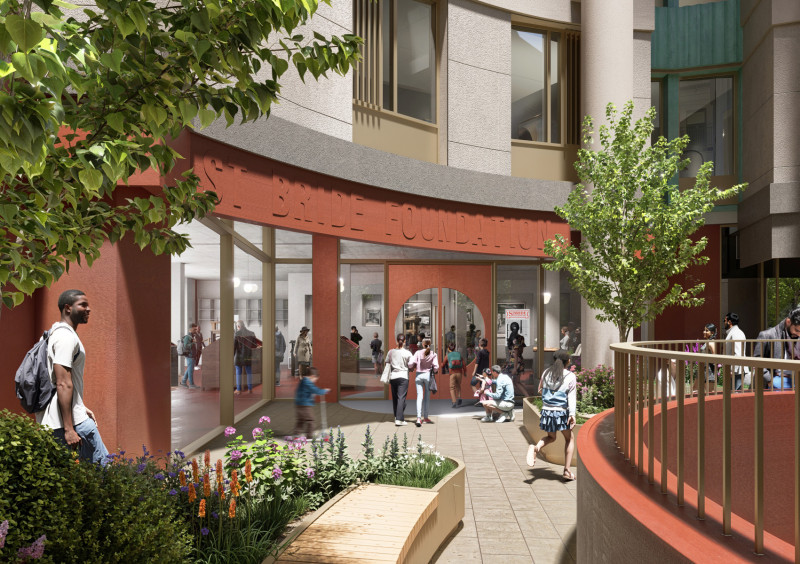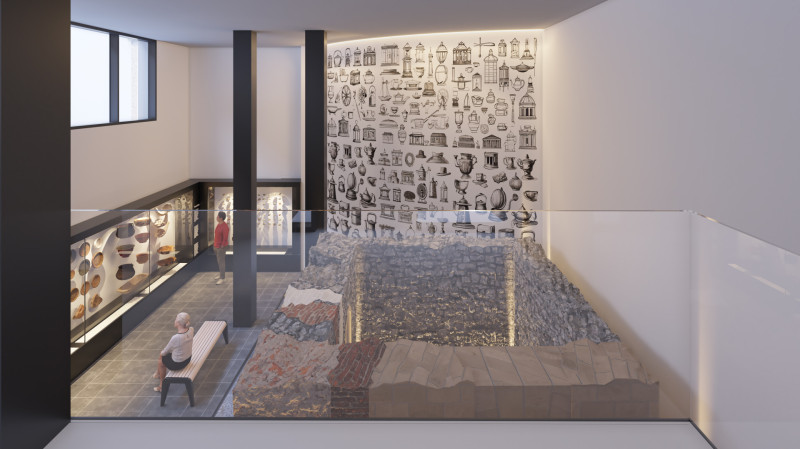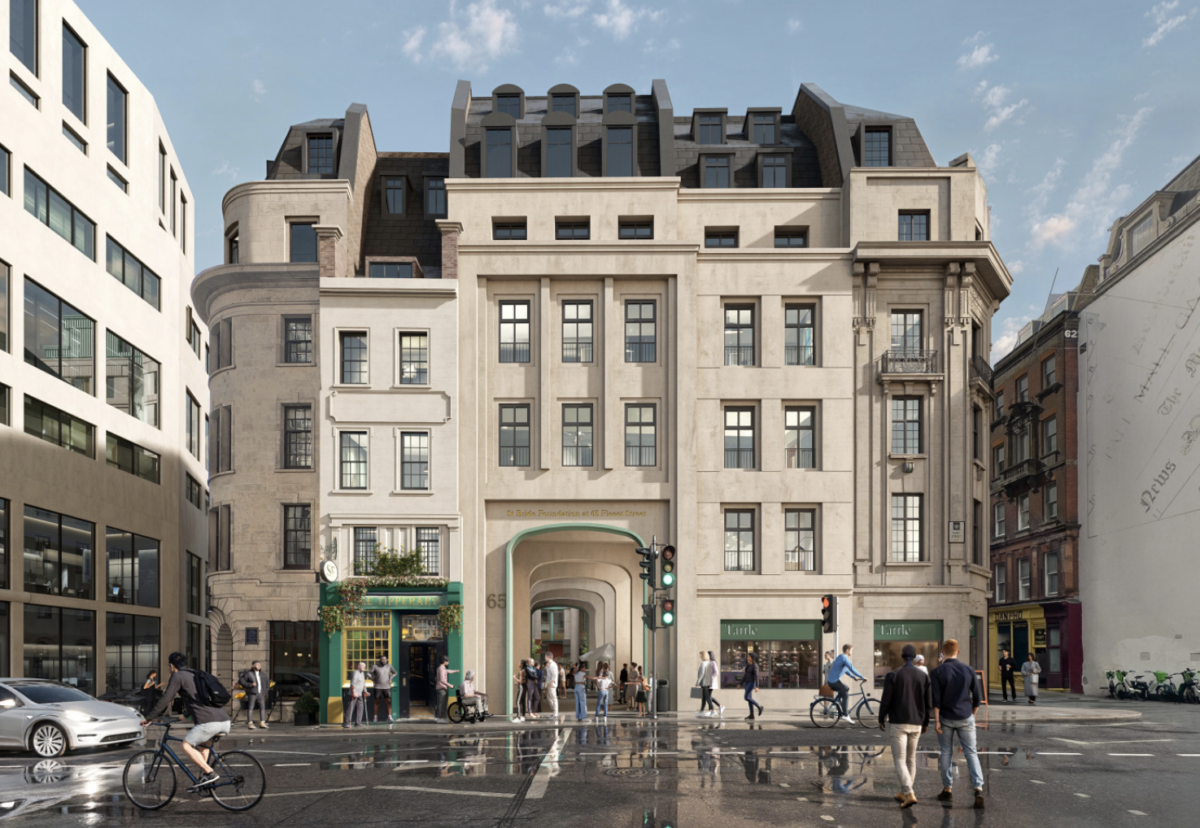Wates are understood to be in line to transform the underused office building at 65 Fleet Street.
The former offices of law firm Freshfields Bruckhaus Deringe will be retrofitted and transformed to achieve a BREEAM rating of ‘Excellent’, with the development itself seeing the vast majority of its structure reused and retained, while becoming far more energy efficient.

Public realm improvements as part of the proposals also extend to the continued refurbishment and extension of London’s oldest Irish drinking establishment, the Grade II listed Tipperary pub and supporting the local area by delivering vibrant active frontages onto Fleet Street and Bouverie Street.

Public realm with access to St Bride Foundation’s collection of materials, celebrating the history of print, graphic design and typography.
The proposals include new public access routes and public realm improvements around the local Whitefriars Crypt which is, at present, largely hidden to the public and only accessible via appointment with the building management.

It is all that remains of the 13th-century Whitefriars Monastery, once home to the Carmelite Order of the White Friars, who used to own a large stretch of land between Fleet Street and the river Thames.

Whitefriars Crypt will be opened to the public
Preet Ahluwalia, principal director at Dominus, said: “Our expert team has a robust track record of delivering exemplary schemes that create real value for local communities and economies – 65 Fleet Street will be no different.

“By working with the existing building and with an ambitious design team, we intend to minimise our environmental impact, positively contribute to the City of London’s Destination City Plan and create a place that truly serves the district and its people.”
Chairman of the City of London Corporation planning committee, Shravan Joshi, said: “Once completed, the refurbished building at 65 Fleet Street will boast some of the highest sustainability credentials in the City, while accommodating the world’s best and brightest students and opening up a new cultural space.
“A planning approach that favours retrofitting not only enables us to attract new demographics to recently restored, characterful buildings, but it also maximises the productivity of the Square Mile’s limited space and does so in a way that retains embodied carbon, improves operational efficiency and celebrates our old buildings.”


